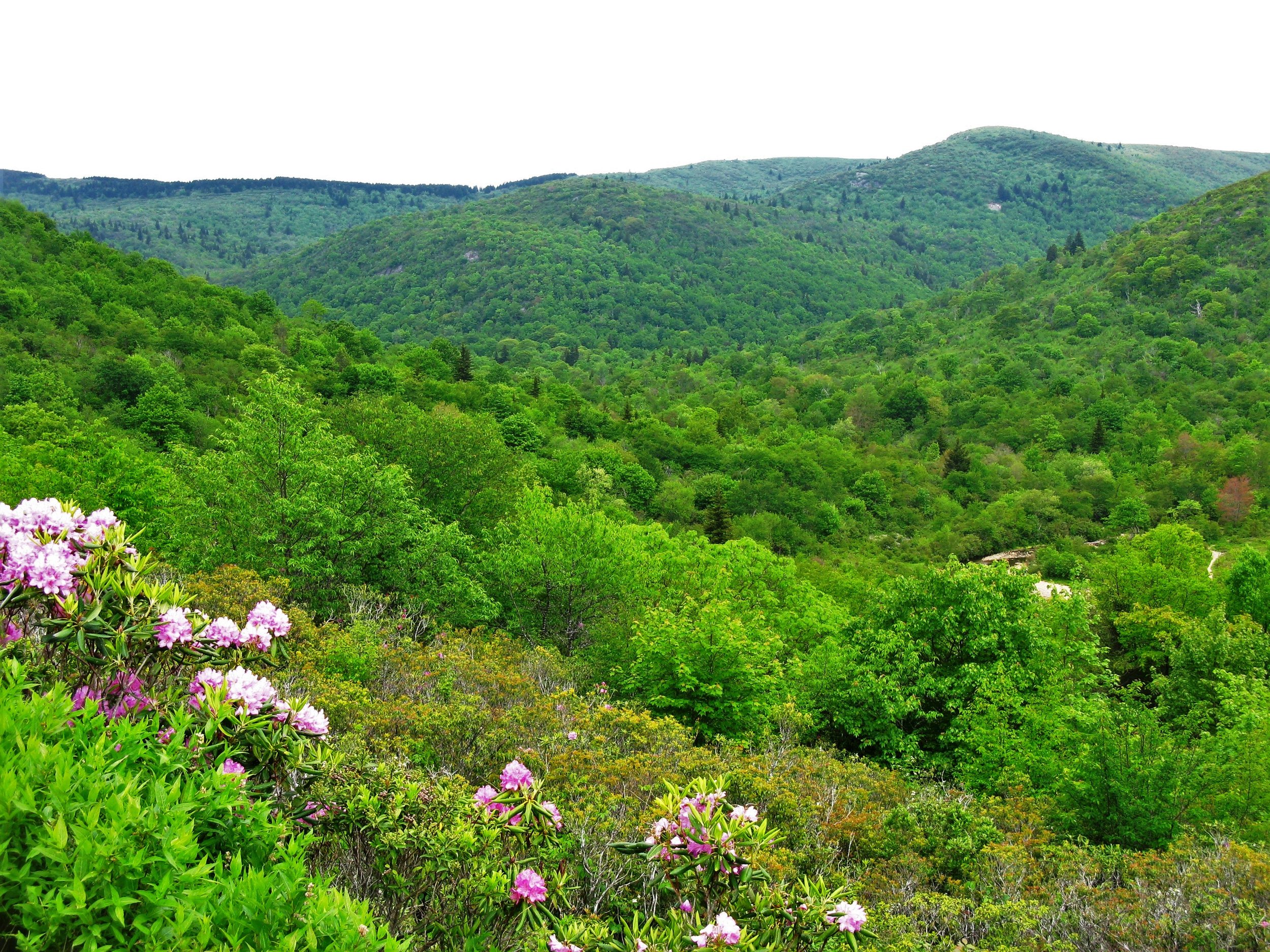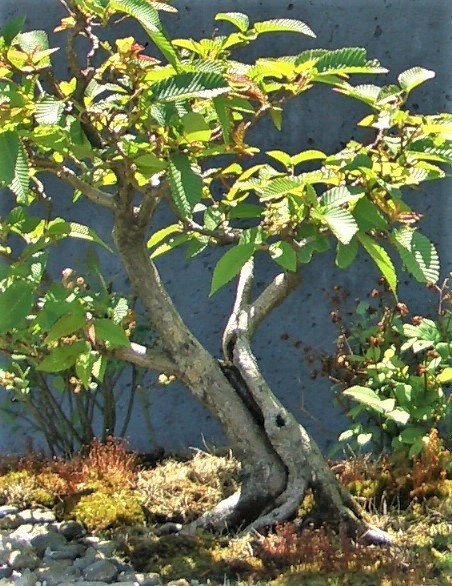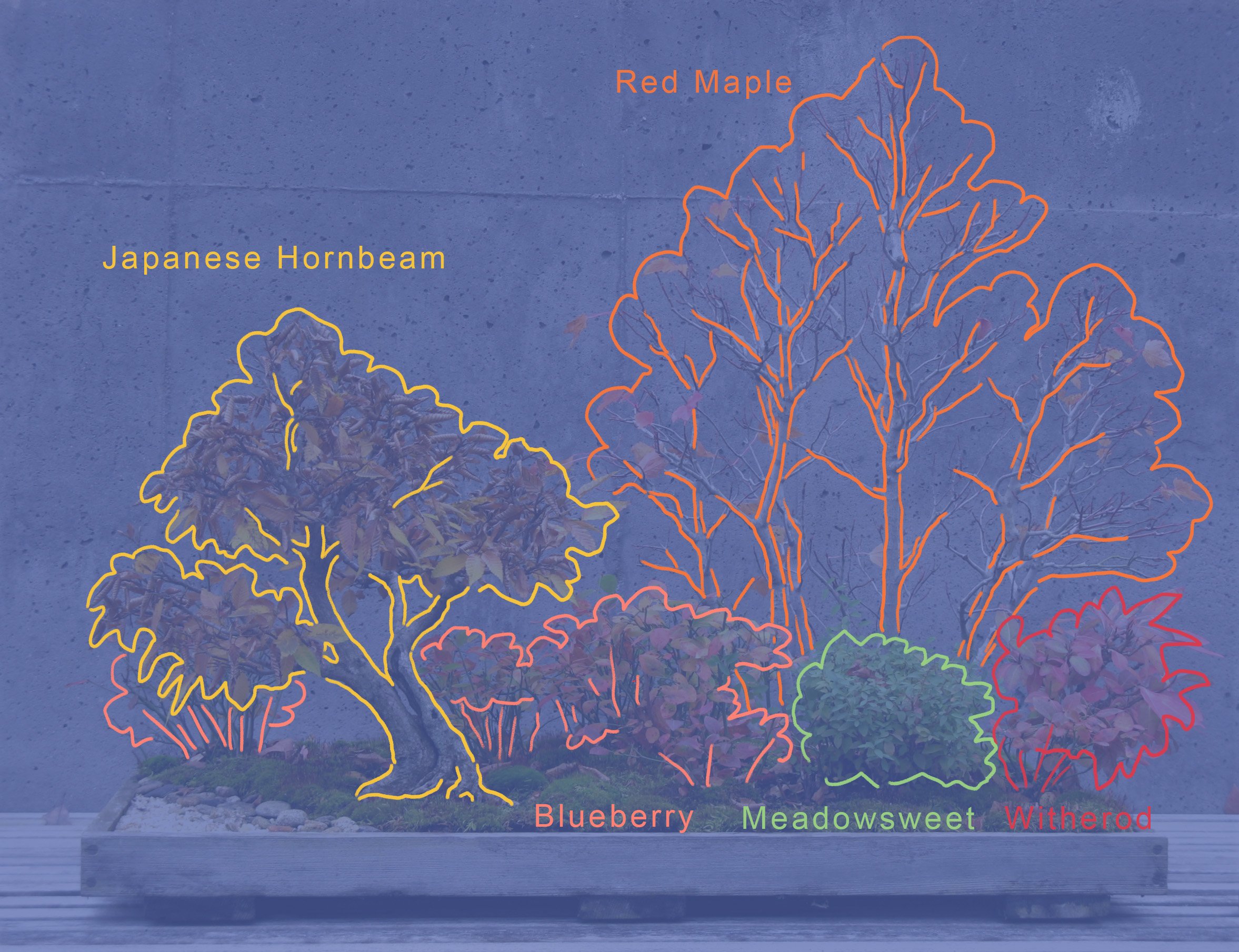Graveyard Fields - Part 1
Graveyard Fields is a fabulous place. Located in western North Carolina off the Blue Ridge Parkway a little more than a half hour drive south from the Arboretum, Graveyard Fields is a broad, flat, high-elevation valley in the Great Balsam Mountains. The Yellowstone Prong of the Pigeon River flows beautifully right through the middle of it. There are several peaks in excess of six thousand feet surrounding the valley and three scenic waterfalls within it, along with miles of hiking trails that give access to the wondrous pleasures of the place. Graveyard Fields has an evocatively mysterious name, too, and a signboard at the Parkway overlook gives one account of its origin:
Yes, Graveyard Fields is a fabulous place, and many years ago I used to go there often. In looking back through my photo files I discovered I haven't been in the valley proper in thirteen years. I've been by it on the Parkway a thousand times since then and hiked in adjacent parts of the forest, yet as a matter of habit I shy away from visiting Graveyard Fields itself. I'd like to go back again someday, if I ever happen to drive by when the parking lot isn't filled to overflowing. Baseball folk-hero Yogi Berra once said of a famous New York restaurant, "Nobody goes there anymore - it's too crowded!" That more or less sums up how I think about Graveyard Fields. It is so fabulous a spot that it has become ridiculously popular and is usually overrun with visitors. The shear number of people you find there on any given day not only negates any sense of solitude or refuge, but also results in heavy impact to the trail system and the overall ecology of the place. Yet it remains special for its grandeur and rugged physical attributes, and I'm glad I was able to spend many adventuresome hours exploring Graveyard Fields back when I did.
Here are a few images from my last visit to Graveyard Fields, in May of 2010 (click on any image for full view):
There is another Graveyard Fields. It is considerably smaller than the one off the Parkway but much more accessible, and it is never crowded there unless you want it to be in your imagination. The Graveyard Fields I'm talking about now is a miniature representation of the real place and it can be seen on just about any visit to the Arboretum's bonsai garden when little trees are on display:
The tray landscape version of Graveyard Fields was created in a public demonstration at the 1999 Carolina Bonsai Expo. It was the second such bonsai representation of a well-known Southern Appalachian locale to be included in our collection (after Mount Mitchell) and it was chosen as a subject because of the unique character of its environment. In preparation for making the planting I took a trip to Graveyard Fields in late September just prior to the Expo. I was well familiar with the place but wanted to look at it specifically from the point of view of how best to capture its essence in miniature. I took along my camera, a 35MM film model, and recorded the visit in photographs. I made a poster board display of these print images and had it up at the demonstration, along with a very brief poem about Graveyard Fields. I did not keep the poem, which is too bad, but I still have the photos. Here are two particularly pertinent images:
The first photograph shows a place where open field merges with the woodlands' edge. Originally the big valley was covered in high-elevation forest, as all the surrounding area still is. The reason Graveyard Fields is a field at all has to do with the catastrophic fire that occurred there in the mid-1920s, a fire so intense it burned even the organic material in the soil. No trees grew for a long time afterwards, the wasteland being only gradually recolonized with plant life over the ensuing years. First came herbaceous plants — grasses and wildflowers — followed by woody shrubs, most notably blueberries (Vaccinium sp.). In more recent decades, trees have been slowly reestablishing their domain. There remains plenty of open area, though, and the photo shows one of many places where field and forest meet. Many of the red-leaved shrubs seen in the image are blueberry bushes.
The second photograph captures the image of a tree growing right on the banks of the Yellowstone Prong. It has been a long time, but I remember that tree as being a yellow birch (Betula alleghaniensis). It stood out for being the only tree in the general vicinity, and, although it grew right next to an ample water source, it had an irregular, somewhat battered appearance. It made a good focal point and the image of it stuck in my mind.
No photographs are known to exist of the demonstration program in which Graveyard Fields was assembled. In fact, the first picture I have of the planting dates from May of 2005, more than four years after the fact:
The next available image shows the planting two years later in 2007, and this photo is of higher resolution so it's easier to examine in detail:
Graveyard Fields was originally planted in a wooden box intended as a display container. Mostly this was an economizing measure because large ceramic trays are expensive, but I liked the idea of a wooden container because it offered a different, more rustic look. We used redwood to build the planter and then burnished the wood with a torch to introduce the element of fire, so important in the story of the real-life Graveyard Fields. Five different plant species were used in the composition: Japanese hornbeam (Carpinus japonica); red maple (Acer rubrum); an Asian meadowsweet (Spiraea sp.); witherod viburnum (Viburnum cassinoides); and dryland blueberry (Vaccinium pallida). Looking at the far left side of the composition, there is an area with white gravel and some small round stones, meant to suggest the water of the Yellowstone Prong and the larger rocks along its banks.
The real Graveyard Fields covers a vast area. A good deal of the remote character of the place comes from how sprawling and open it is, and this presented a challenge when contemplating how to go about representing it in a miniature tray landscape. That was the impetus for going there prior to the Expo demonstration, looking around and photo documenting the terrain and the plants that occur at the site. The two photographs from that outing shown earlier are consequential for what they depict. I decided I would try to evoke the look of the field meeting the woodland, as seen in one photo, and also depict the gnarly tree growing on the banks of the stream, as seen in the other photo. It was necessary to compress the scene, however, because there was only so much space within the wooden container. Here I was relying on the suggestive element of bonsai, by providing certain parts of the scene and leaving it to the viewer to fill in the blanks. In this instance the blanks happened to be large areas of open ground. I always felt a little ambivalent about how successfully the planting worked in that regard. Fortunately there was another identifying feature of Graveyard Fields that was easier to portray.
I previously mentioned the blueberries that grow in abundance at Graveyard Fields, but greater emphasis should be placed on them. Highbush blueberries (Vaccinium corymbosum) are the most common blueberry species found there and they are naturally occurring, spread out over many acres. The tasty fruit ripens in late summer at that elevation and during that time the visitation rate at Graveyard Fields spikes accordingly. People turn out by the thousands to pick blueberries, and even decades ago before the place was so heavily trafficked lots of people went to Graveyard Fields in August to collect the wild fruit. For many local people, Graveyard Fields is synonymous with blueberry picking. So, to effectively represent the place in a way most people familiar with it would appreciate, the planting had to have blueberries. Highbush blueberry is a big shrub, capable of growing ten feet tall. It could be made smaller through bonsai training techniques, but it would be impossible to keep them at a size appropriate for the scale of the Graveyard Fields planting. Happily, there are more diminutive blueberry species that can be used instead. One of these is the dryland blueberry used in the planting, and these I found growing in abundance as an unassuming, somewhat scrubby ground cover in the woods right on the Arboretum property.
These plants don't grow much more than a foot tall and their leaves and fruit are smaller to begin with. They do fine under cultivation, as most blueberries do, and get bushy when grown in more sunlight and subjected to pruning. They work perfectly for this application. Blueberry bushes are the primary identifying feature of the Graveyard Fields planting in the same way the dead trees are for the Mount Mitchell planting. I have heard on numerous occasions people who first encounter the Graveyard Fields planting in the garden, read the label that gives its name and then say, "Oh, Graveyard Fields! Where are the blueberries?" When they find the little blueberry bushes, it establishes a personal connection for them between the actual place and the miniature representation.
Some notice also needs to be given to the Japanese hornbeam. In Graveyard Fields the hornbeam is used as a stand-in for the yellow birch growing alongside the Yellowstone Prong, as seen in the earlier photograph. The hornbeam had been donated some time prior by bonsai volunteer Duane Clayburn. He had used it as a stock plant during his days as a bonsai nurseryman, meaning that he frequently took cuttings from it to use for propagation purposes. He didn't think of the tree as being a bonsai, but rather as a kind of "working" plant, so he didn't invest much effort in giving it shape. He apologized when he donated it, saying the plant didn't look like much but maybe I could use it for taking cuttings the same way he had. It was a beat-up looking thing, but not without visual interest. The trunk was cleaved in half on one side and the surface roots, although overexposed and splayed out in an ungainly way, gave the tree a somewhat anthropomorphic appearance. I set it aside for a couple years, but when planning the Graveyard Fields tray landscape that hornbeam's true purpose became apparent. It had the right character to play the role of the yellow birch growing at the water's edge. The hornbeam is not meant to look just like the birch that inspired it, but rather to suggest the effect of that wild tree.
This photograph from 2009 shows Graveyard Fields ten years after the planting was first put together:
All the plantings had filled out nicely at that point and were doing well. I liked the piece as a reflection of an iconic local attraction and it was favorably reviewed by our visitors, but I had grown dissatisfied with the look of the wooden container. It had outlived its novelty and the planting was starting to feel a little crowded in that box. A change was in the offing.
To be continued…


















